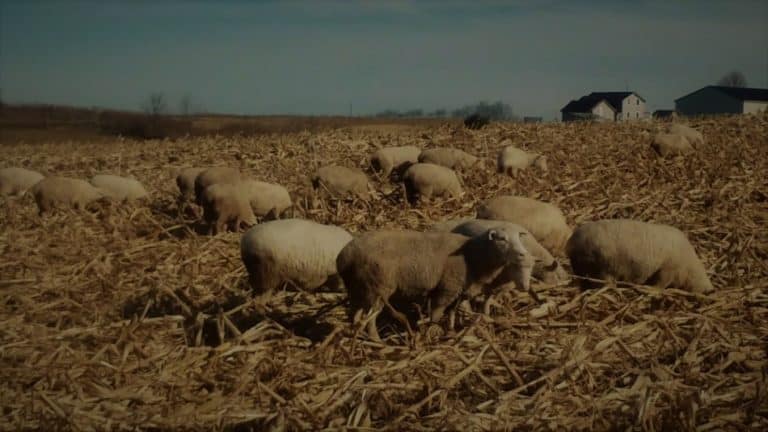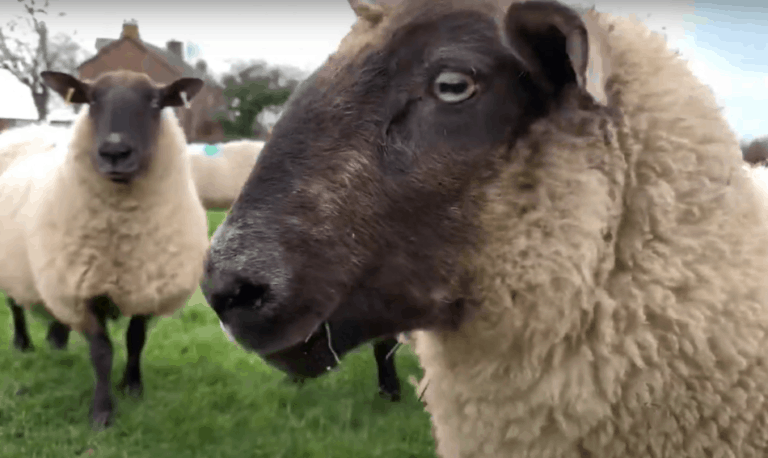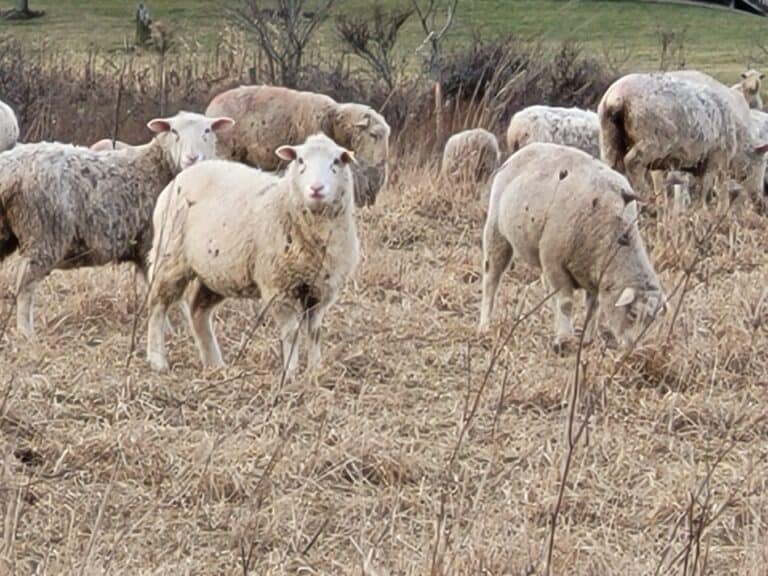How Much Do Sheep Cost? (Rams and ewes)
Sheep are starting to be more popular, and for good reason! Sheep are versatile and you’ve got a lot of breeds to choose from.
Once you have an idea of what type of sheep you are looking for now you need to get an idea of what it’s going to cost to get your starter flock.
We’ll go over the costs of buying sheep based on what sheep you buy and when you buy them.
Sheep cost between $300-600 for ewes and $800-1,000+ for good rams. Both lambs and aged stock will cost less than adult rams or ewes in their most productive years. The price for sheep varies with area, stage in the reproductive cycle and demand for that breed or type of sheep.
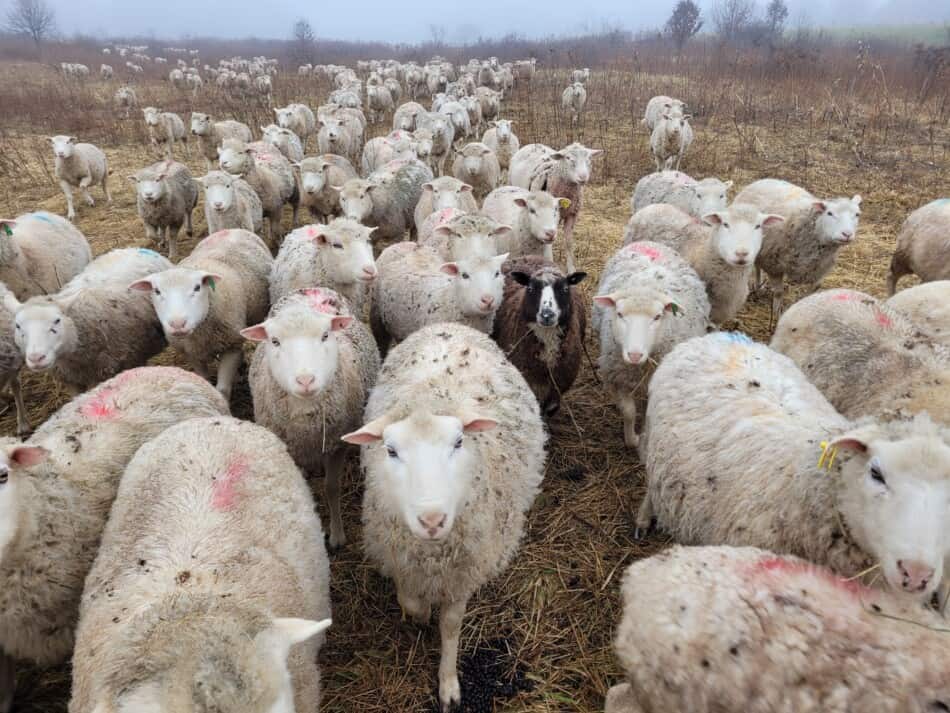
| Breeding sheep | Price (Ohio 2022) |
| ewes due to lamb within 30 days | $525 each |
| open ewes (not bred) | $300-500 each |
| bred ewes (due in 3-4 months) | $400-600 |
| ewe lambs | $350-400 |
| rams | $800-1,000+ |
| ram lambs | $400-800 |
Please note that costs will vary significantly by area and by demand, so you’ll have to dig a bit deeper to get the specifics for your area and the type of sheep you are looking for.
A good place to start is market reports for the closest auction to you and sales results for breeding stock sales that have been held recently for similar sheep.
How Much Will My Lambs Sell For? shows you how to find the current and seasonal prices in your local area using auction market reports.
Update for July 2023: lamb prices are not as high this year as they were in the past few years which tends to lower commercial ewe prices.
Lower market or feeder lamb prices is not likely to significantly change the cost of the higher value breeding stock, since great genetics are priced well in nearly all years.
| Ewes for breeding stock | Relative price |
| ewe lambs | lower |
| open ewes | higher |
| bred ewes (2-4 years old) | highest |
| aged ewes (over 5-6 years old) | lower |
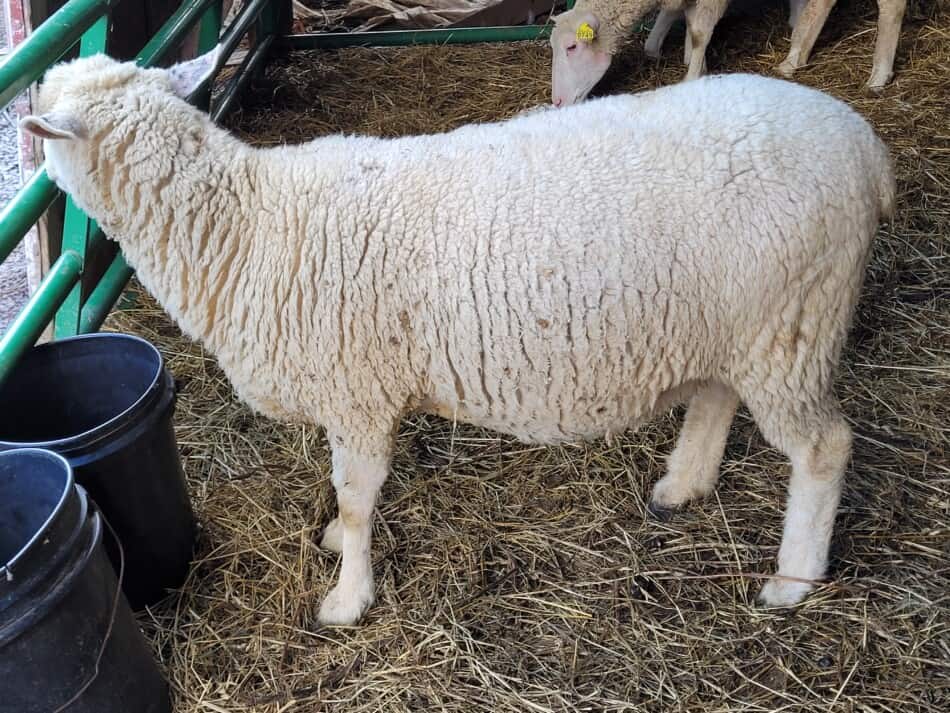
Ewes cost $300-600
Ewes, which are adult female sheep that have had lambs, will cost between $300-600 for commercial ewes. While that may sound high for your area, around here this is a normal price.
For example: at an auction this spring a flock of 70 ewes due to lamb in a month were selling from $500-550 each. The ewes were nice but nothing outstanding, it’s more about sheep market prices being high.
How Much Does A Ewe Cost? is my article that focuses specifically on ewes and the factors that affect their pricing.
Always buy high quality breeding stock to start with. Since you’ll be working with these genetics for quite a few years, start with something that is going to serve you well.
Let me go into what I mean by commercial ewes, these are good sheep that can be a mix of breeds or a purebred animal that are not show prospects, just normal sheep that should do well on most any farm.
Generally, the ewes for sale are ewe lambs, proven ewes(which can be bred or open) or aged ewes.
Ewe lambs are female lambs under one year of age. Some well grown ewe lambs can have their first set of lambs at one year of age, some farmers wait until the ewe lamb is two to have her first lambs.
Proven ewes are females that have had lambs before. She may be selling bred or open (not bred).
Open ewes are females that have had lambs before but are not bred at this time. If you get open ewes, you will need to get a ram as well to have lambs in the following lambing season.
Bred ewes are females that have had lambs before and are due to have lambs again. If you buy bred ewes, be sure the lambs are coming at a time that is suited to you and your farm.
Aged ewes are older females that are reaching the end of their productive life, generally 5-6 years of age and older. As long as these gals are in good shape, they can produce lambs.
Younger ewes are worth more
The highest prices you’ll normally see for ewes are for younger ewes ages 2-4 or so, that have had a set of lambs, so they know what’s going on with lambing and they have all of their productive life ahead.
Ewes will generally be most productive between the ages of 2 and 5 or 6. Much older than that and you start losing productivity due to age related problems like wearing down of teeth.
Proven ewes that are bred back will be higher priced
Proven means they have been through at least one year as a breeding age sheep and have successfully bred, lambed and raised those lambs.
If the ewes that you are interested in buying are bred, due to have a lamb, they will command the highest prices of any ewes.
Why? Because they are on the younger end of things, proven and bred back, so you don’t have to worry about a ram the first year.
Aged ewes will cost less
Aged ewes, which are older females that are over age 5 or 6, will be less costly to buy.
The catch is that how long a ewe can remain productive is very individual, some are toast by 5 others are going strong at 8 or 9. It depends upon more things than just years.
How long the ewe can stay productive (keep up with lambs) depends upon how well she has been taken care of up until this point and how well her body is holding up.
With ewes of this age, you must carefully look over her body condition, teeth, feet and udder to make sure she is capable of keeping up with the flock and taking care of lambs in the coming year.
Be aware that you are more likely to have culls out of this age group and will need to replace them sooner, but if you can find great looking older ewes, this may be a good way to get started with sheep.
Why? Because if you are completely new to sheep and this will be your first lambing, older ewes are going to know what’s what, which is really nice to have since you don’t!
If these gals are in good shape, getting a few veteran ewes to start out with can be a fine way to get some experience with sheep.
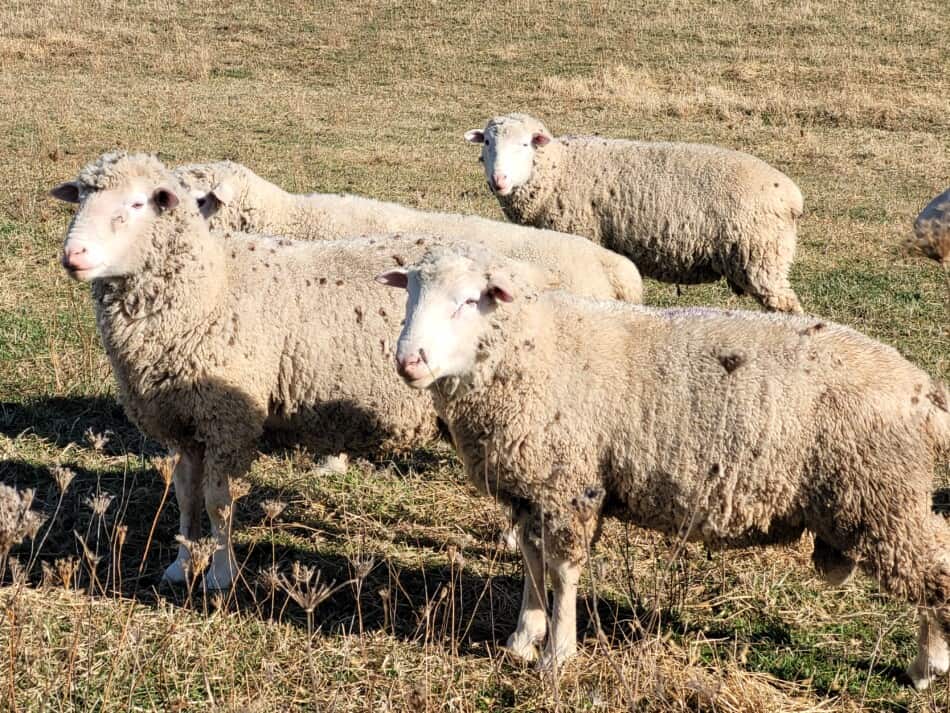
| Rams for breeding stock | Relative price |
| ram lambs | lower |
| rams 2-4 years old | high |
Rams cost $800-1,000+
The cost of a ram is generally higher than the cost of a ewe. A good way to figure up what you should plan to spend on a ram is to take your average market lamb price multiplied by five.
For example: if in your area market lambs generally sell for an average of $100 each, it would be reasonable to expect to pay somewhere around $500 for a nice ram.
If your area has market lambs selling for $200 each, then a nice ram should be more in the $1,000 range.
This five times the cost of a market lamb figure is for a nice, but not great, ram. If you want an all star, you’ll need to pay more and probably travel further to get him.
If you want any old thing (which is not a good idea!) it will be less, for now, anyway. Poor quality rams will come back to haunt you for years to come, don’t cheap out here!
Always buy high quality breeding stock, doubly so with rams.
Your ram choices are a bit different than with ewes, you have ram lambs and rams. Of course, there are older rams, but that is not generally how they are grouped. It’s usually just ram lambs or adult rams.
Can You Keep Rams With Ewes Year Round? goes over why keeping a ram with the ewes all year is usually not a good idea and helps you figure out the ideal breeding season for your operation.
Ram lambs will usually cost less than adult rams
Ram lambs are rams that are under one year of age. Usually a ram lamb can breed females by the time he is 7 or 8 months old, so he can be a dad when he is a year old.
A ram lamb will generally cost less than an adult ram, simply due to his breeding ability. Ram lambs need to have a restricted number of ewes for the first year, more like 10-20.
Ram lambs also need to be tall enough to bred adult ewes, which is more of a concern if you are cross breeding and the ram is the shorter sheep.
Adult rams will cost more
Adult rams are rams that are over one year of age and have been used to sire lambs. This age group of rams is the most valuable from age 2 to 5-6, just like the ewes.
Older rams can be available and if he is in good condition, which will require a hands on evaluation, just like for the ewes, then you may be able to get a nice ram that another farmer doesn’t need any more.
Like the older ewes, check his body condition, teeth and feet, but also check the testicles and general vigor. He should be a looker.
| Attributes of breeding stock | Price |
| will make you money soon | higher |
| has to be fed for months before becoming productive | lower |
| at start of productive life | highest |
| aged stock | low |
| young stock (1 year or under) | lower |
| high demand in your area | highest |
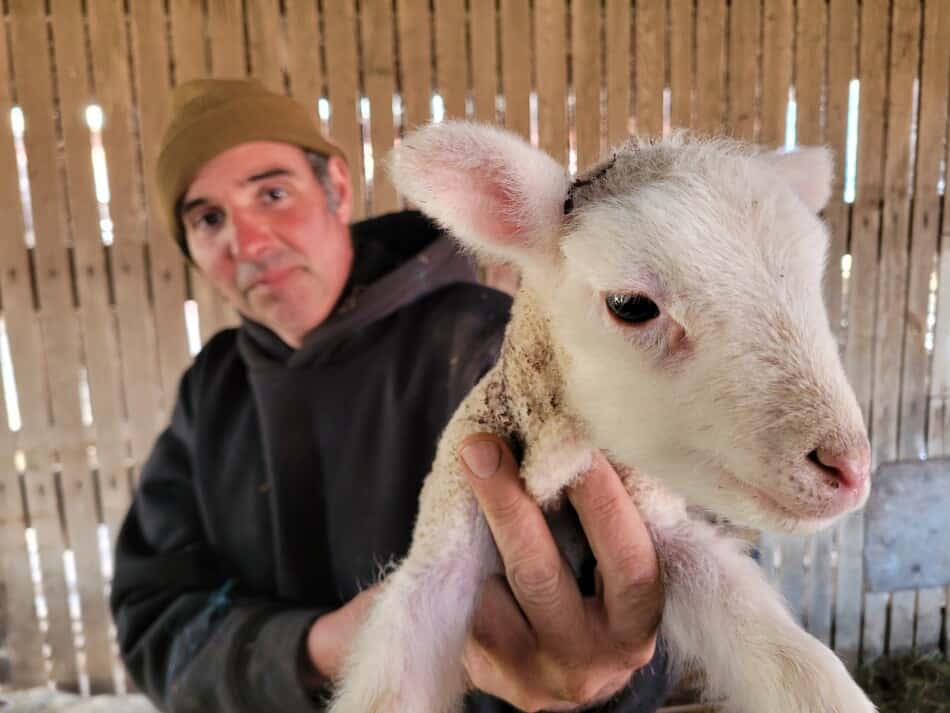
Things that increase cost of your breeding stock
There are some factors that increase the cost of breeding stock regardless of area.
How soon you get results
The closer the breeding stock is to making you money or giving you results the more they will cost. This is why a bred ewe will cost more than an open ewe, the bred ewe will give you results more quickly.
This is also why an adult ram is generally worth more than a ram lamb, the adult can be used on more ewes than a younger ram.
The time of year/time in the reproductive cycle is also a factor with costs since it is directly related to how soon you get results.
If you buy ewes that are due to lamb soon, you’ll pay more since nearly all of the costs to get the sheep to lambing are already paid.
If you get those same ewes after they weaned lambs, these ewes will have just made the owner money and will take time until they make you money which makes these sheep cost less.
Demand for the breed
As with most things, trends come and go in sheep as well as other livestock. There always seems to be a new, hot breed that everyone wants.
If you want the currently popular breed, as well, it’s going to cost you more than buying sheep of a breed that is less trendy.
I want to point out here that there could be reasons why buying a popular to your area breed is the best choice for you and therefore worth the money.
Just make sure you are choosing based on your needs and how well the sheep suit your situation and plans for your flock.
This also works the other way, if you want the same type of sheep as most of the other sheep farms or ranches in your area, good news, you should be able to find good sheep for a reasonable price.
As mentioned above, with lamb prices being lower lately, a lot of the folks who flooded into sheep are now selling their flocks. This may be an opportunity for you, however proceed with caution!
Sometimes these are great sheep with a wish washy owner, other times these are so-so sheep with an owner that paid too much for them, not a great situation for anyone.
Do your research and if you can take someone who has years of experience with the breed with you before you agree to buy.
Registered stock
Registered stock is normally more expensive than non registered stock of the same breed.
If registration papers matter to your or your plans, it may be worth the extra cost. If the registration does not matter to you, it is an extra cost that is not providing extra benefit.
The Official Estimate Of Sheep And Lamb Inventory Values shows historic average prices for sheep in the U.S. since 1867. Prices have gone up significantly since 2011, with a 2012 average price of $259 per head.

